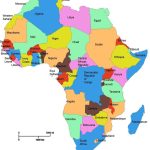As noted above, remittance flows are neither static nor unidirectional. Changing economic conditions and increasing instability and violence means that long-established remittance destinations change. What happens in South Africa in the coming years, for instance, will have a huge impact on Zimbabwe.
The return of migrants to seek land and farm in Zimbabwe is indicative of the value placed on having a rural home and the viability of farming as a livelihood. Coming back with some cash means that the capital constraints of getting going on a more intensified commercial operation are reduced.
The growth of land leasing, rentals and land purchases across our sites, along with ongoing subdivision of plots to give land to children, is witness to the demand for land as an investment and livelihood option. This is not just returning diaspora migrants, but also other businesspeople, church leaders, those with political-military connections and others who see land as a good, safe source of income.
As many of our informants from both A1 and A2 resettlement areas point out, they no longer receive remittances from relatives in town or abroad but send them. As Mrs S from Matobo explained, “We sponsor our kids in town, not the other way round. Several are working single mothers and every time I harvest here, I send five 50kg bags of maize to town. Life in town is hard – much better to be here farming! In town you wake up in poverty, but here there’s always food, and you don’t have to pay. We’re trying to show our kids that life here is better. It’s different to the old communal areas where we were before – things are ‘modern’ in the resettlements!”
The flow of food and other agricultural goods (vegetables, meat and so on) from land reform areas is significant, and essential for food security and social protection in urban areas of Zimbabwe, as well as in communal areas where many settlers originally came from. This is a largely uncounted, unrecognised flow, but one that is central to the new economy of post-land reform Zimbabwe, likely outstripping many times over the overall value of the various donor projects supporting urban households with cash transfers and so on.
The remittance economy linked to land reform areas is vibrant and driving investment in rural areas, as well as supporting vulnerable households in towns and other rural areas across the country. Remittances do not flow in a single direction, are subject to changes in politics and economy both at home and abroad and involve an increasing number of transfer approaches that increase efficiency and enable quick responses.
The changing dynamics of remittance flows remain under-studied yet are vitally important, as this blog has hopefully shown. Our future research will hopefully delve into this theme in more depth, adding some quantitative specification to some of the qualitative cases shared here.
How people make use of money – both from local farm production and from externally-derived sources – through approaches to saving in a highly volatile economy is the focus of the next blog in this series. –Zimbabweland
(181 VIEWS)

